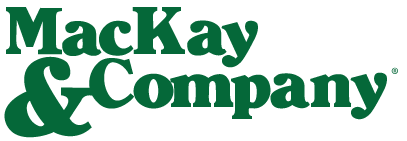Once again the trade journal and newsletter headlines are proclaiming, often in quite large print, that the demand for new trucks and trailers is slackening, that orders are well below expectations and build rates will fall meaningfully below those of last year and several previous years. Open production slots that were virtually non-existent a year or two ago are popping up like a measles outbreak. Interviews with dealers indicate inventories are quite a bit higher than present and anticipated demand will probably be. A surprise? Shouldn’t be.
The headwinds in the economy are slowing economic growth; a half-point growth in GDP last quarter is perhaps better than no growth – or negative growth – but it isn’t very much better. Carrier freight volumes are off and freight rates are under pressure. There is little good earnings news being reported. Most truck purchasers who needed new equipment already have it. Why buy more if you can’t effectively use what you already have.
The current slack demand for equipment appears to be a surprise for many – and it should not be. The heavy truck and trailer industries have been in this position many times in recent years; 1975, 1980, 1989, 2000 and 2007. Prior to each of these instances truck and trailer demand was strong, buoyed by solid economic growth, strong freight activity, (usually) strong construction activity, etc. When the economic floor gave away – often sharply, sometimes subtly, equipment demand tanked. Blessed (or burdened!) with a reasonably long memory and a library of data provided an interesting perspective. We have been here before and are here again. Been there, done that!
Let’s look at the numbers. There are approximately three million Class 8 trucks and tractors currently in operation. About 60% of these are in the hands of the original owners, some 1.6 million power units. Original owner trade cycles -- and ONLY original owner trade cycles – drive demand for new equipment, either for replacement or expansion. With the lackluster economic performance of the past few years expansion is hardly what it might have been in earlier cycles.
Trade cycles vary wildly by vocation; lease/rental firms might roll equipment in four, five or six years, carriers from four or five (truckload) to 10+ (LTL& parcel) construction companies in ten, twelve or fifteen – and government agencies up to twenty years or more. Trade cycles are driven by a variety of factors; average annual mileage, maintenance costs, driver retention, budgetary constraints and regulatory requirements are just a few. Ryder and Penske want “standard” equipment that looks good and will operate reliably for its customers. State and local governments want specialized vehicles (body and equipment cost top chassis outlays) that will operate for years (often decades) and can fit budget constraints. Most other original owners have equipment purchasing requirements somewhere in-between these two.
Our most recent research would indicate that the average Class 8 trade cycle has been creeping toward ten years. This is a significant increase from what we have seen a decade or so ago; equipment is better, lasts longer and is more expensive today than earlier. So, if the 1.6 million Class 8’s in the hands of the original owner is a good number – and the ten year trade cycle is also a good number – average annual Class 8 demand should be in the vicinity of 160,000 units. Average annual Class 8 demand (retail sales) for the 1990-1999 decade was 170,000 vehicles; for the 2000-2009 the number was just short of 180,000.
But – for the past six years – Class 8 retail sales have averaged nearly 190,000 units. If base case demand is about 160,000 vehicles, then maybe 180 ,000+ Class 8’s were produced in excess of what should be considered “average” demand. Why are we surprised that current demand is weak and getting weaker? These trucks and tractors will have to be absorbed into the operating universe – and that will not happen in a few months, especially with the economy as slack as it currently is.
The original owner operating universe of trailers is larger than the Class 8 universe. However, trade cycles for trailers are meaningfully longer than for power units. The net average annual demand is in the vicinity of 200,000 units. For the 1990-1999 decade trailer production averaged just short of 220,000 units. For the subsequent decade (2000-2009) the average was just over 190,000 units. But for the past six years (2010-2015) production averaged 238,000 units. Which means that a quarter million or so trailers will need to be absorbed into the original owner operating universe. Like the situation with Class 8’s, this won’t happen overnight, either.
The average Class 8 “UP” cycle lasts 5.2 years. From the bottom to the top of this cycle, Class 8 production increases 119%; the range is from 81% (1984-1988) to 220% (2010-2015). The average “DOWN” cycle lasts 2.6 years. From the top to the bottom production declines 49% on average; the down range is narrower (40% to 68%).
Trailer production cycles are nearly identical to those for Class 8 equipment. The average “UP” cycle is 5.3 years. From the bottom of the cycle to the top production increases 130% on average. The range is wide; 81% (1984-1988) to 220% (2010-2015). The average “DOWN” cycle is 2.6 years, with production falling 52% on average. The down range for trailer production is also narrower, 32% - 64%.
What’s the bottom line? Trucks and trailers are a cyclical business – and have been for decades. Why are we surprised when cycles peak and recede? Shouldn’t be! We’ve been there before – and we’ll be there again.


